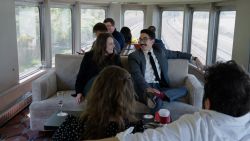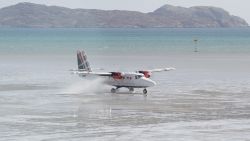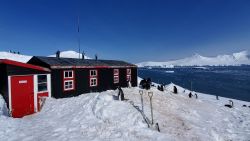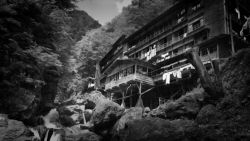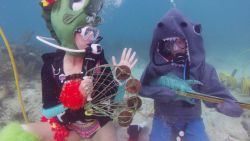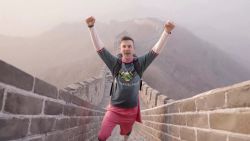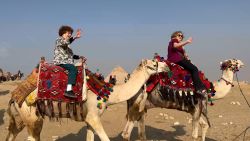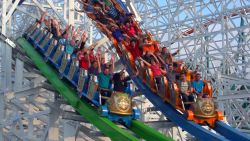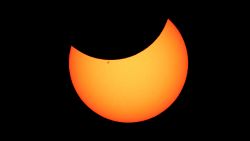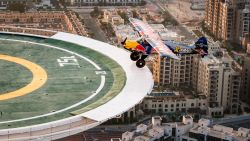Programming note: CNN’s new profile series, “New Explorers” introduces some of the 21st century’s top adventurers. Follow us on Facebook and Twitter with #NewExplorers. Meet more pioneer explorers at cnn.com/New Explorers.
Story highlights
Matt Moniz, 17, is an accomplished mountaineer who was profiled in CNN's "New Explorers" series before he traveled to Mount Everest
Moniz survived a deadly avalanche triggered by the 4/25 Nepal quake and is now leading an effort to help survivors in remote areas
When the wall of snow came roaring down the mountain, 17-year-old Matt Moniz jumped behind a boulder with his climbing partners, unsure whether he would survive.
“You couldn’t really see the avalanche until it was literally coming right through the clouds right on top of you,” Moniz recalled.
The avalanche killed at least 19 people on Mount Everest last month. The force of its air blast created a vacuum behind the big rock where Moniz, his climbing partner Willie Benegas and their Sherpa guide were huddled, leaving them all temporarily unable to breathe.
If he survived, Moniz knew, his life would never be the same.
“After the avalanche, I kinda took a step back and (realized) ‘Wow, we are simply just guests in these mountains,’” he said. “You really have no control.”
Moniz has accomplished more in his 17 years than many climbers do in their entire lifetimes.
He holds the speed record for reaching the highest points of all 50 U.S. states. He’s the youngest climber to summit Makalu in the Himalayas, the world’s fifth highest mountain. National Geographic named him its “Adventurer of the Year” in 2010, when he was just 12.
And like most mountaineers, Moniz had set his sights on summiting Everest, the mountain that inspired him as a 9-year-old boy.
Now, the tragedy in Nepal has set the teen on a very different course.
“I had a plane ticket back to Colorado and a plane ticket back to Kathmandu,” Moniz said. “And my dad was like, ‘Matt, you have a choice’ – (and) I chose Nepal.”
A missed call from Nepal
Like the other survivors at Everest Base Camp, Moniz and Benegas immediately began helping those wounded in the April 25 avalanche.
“Willie went straight to the clinic up there to do triage and first aid work, and I kind of went around and helped (carry) people,” said Moniz, who received first aid training as an Eagle Scout. “We all kind of came together as one team and really worked together and saved a lot of lives.”
Moniz also searched for a satellite phone or a Wi-Fi connection so he could reach his parents in Colorado.
“It was kind of good because in Colorado the avalanche happened at around midnight so … they didn’t hear about it until they woke up,” Moniz said.
Nearly 8,000 miles away in Colorado, Mike Moniz said his first indication something was wrong was when his phone started buzzing shortly after 5 a.m. on Saturday, April 25.
“It was an odd country code, it wasn’t Nepal, and then by the time I woke up enough to realize it was a sat (satellite) phone calling in … it was gone,” Mike Moniz recalled. He tried several times to call the number back, until finally someone picked up the phone.
“That person was on verge of breaking down and … at that moment, I was thinking, ‘Oh no. It could be incredibly bad news about Matt,’” Moniz said.
After some back and forth with the person on the phone, he realized Benegas had been the one who tried to reach him earlier.
“I said ‘Is something wrong?’ and he said, ‘Yes we’ve been hit by a massive earthquake and an avalanche, and there are people dead around me. I have to go.’
“He hung up. I could not get back to him. And so at that point, I had no idea what Matt’s status was.”
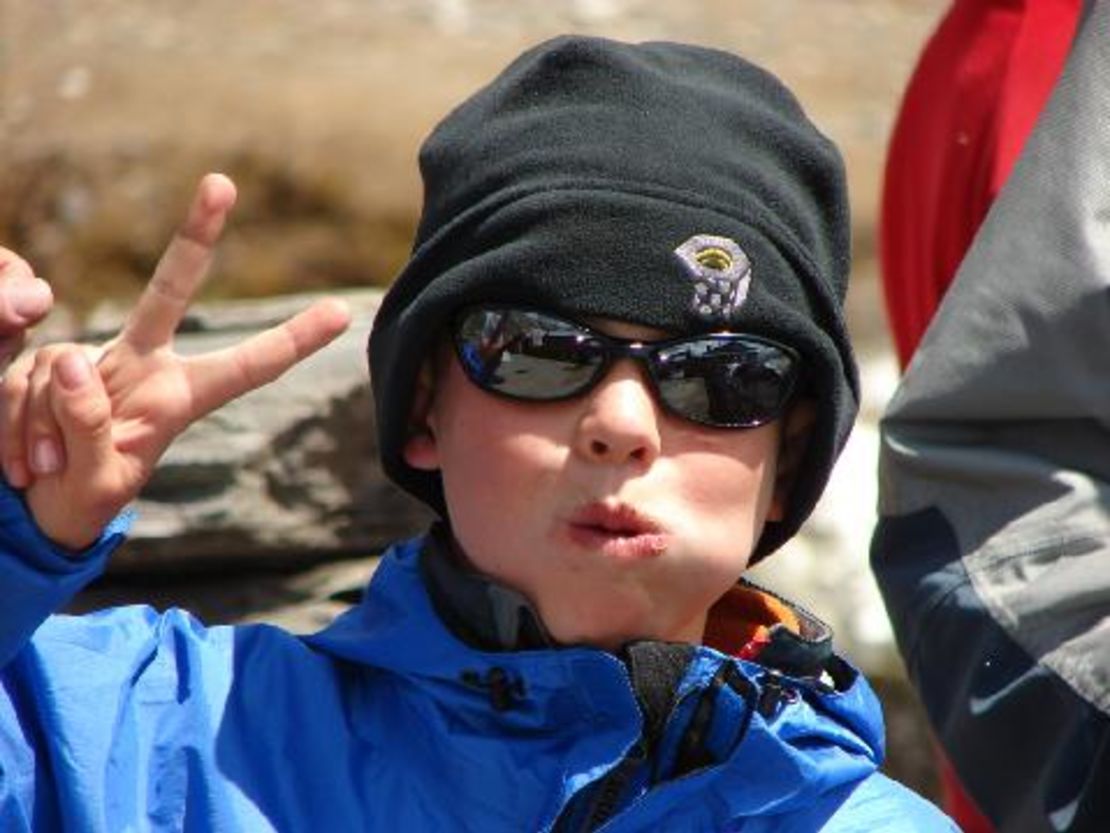
A short time later, Mike – who joked later that “any teenage parent can appreciate this” – received a text from his son that simply said, “Dad, are you there?”
“That was it,” Mike said, chuckling and wondering how his teenage son got a Wi-Fi connection on Everest. He eventually reached his son and Benegas and learned that they were both all right and they were helping with rescue efforts.
“He was like, ‘Dad, I cannot talk to you … there are people injured everywhere and I have to help,’” Mike Moniz recalled. “So it was a pretty emotional moment.”
During the first 36 hours after the quake, father and son spoke for only a few minutes, but the stories Matt told were “reminiscent of a movie scene.”
“One person he was carrying with two compound fractures, they had another aftershock while he was carrying him and they were (both) thrown to the ground.”
The magnitude-7.8 quake killed more than 8,000 people and destroyed or damaged more than half a million homes.
‘Destiny put him there’
When the avalanche struck Everest Base Camp, Matt Moniz “was pretty much ready for that moment,” his father said.
“Destiny definitely put him there to help out,” Mike Moniz said. “More than that, he’s dedicated to continue to help.”
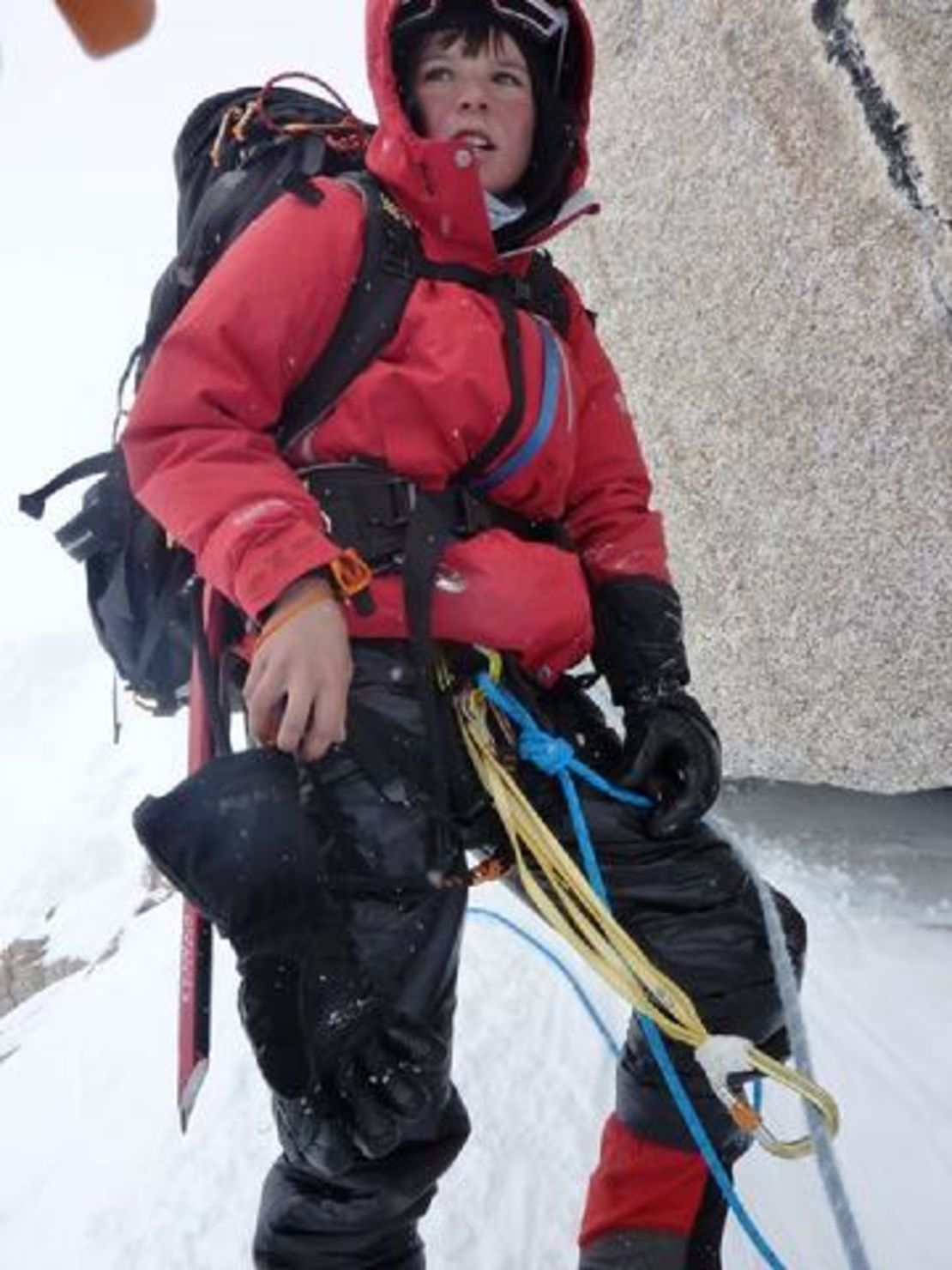
Matt Moniz’s passion for outdoor adventures has always been intertwined with a higher purpose. At 11, he completed a 14-day climb of 14 of Colorado’s 14,000-foot peaks to help raise money to research and combat pulmonary arterial hypertension, a disease that affects his next-door neighbor and best friend, Iain Hess.
He’s also helped raise money to prevent the trafficking of young girls in the Himalayas. It’s hard to understand how he does it, while he’s still in high school AND taking classes at University of Colorado-Boulder.
Now, the young climber is helping to raise money to fund a targeted aid response to help the survivors of Nepal’s quake. He and his fellow climbers, including Benegas, spent a few days in Zurich, Switzerland, with some wealthy business leaders tied to one of Moniz’s corporate sponsors.
Their main goal: to assemble about 1,000 Nepali porters to bring supplies into remote Himalayan villages before the monsoon season begins next month and shuts down all flights.
Matt Moniz said helicopter airdrops will not be enough to help Nepali villagers, particularly those living in Nepal’s remote Manaslu region.
“The big problem with the helicopters is that they’re airdropping a lot of these supplies off and it’s really difficult for the local villages to be able to ration out these supplies,” Moniz said. “Another big problem is … a lot of people haven’t done the research on the specific communities that they’re dropping on, so they could drop 20 (kilograms) of rice for 5,000 people or vice versa.”
The aid effort could also give a much-needed economic boost to Nepal’s struggling Sherpas, who can earn 10 times the average Nepalese wage as climbing guides during the two-month Everest season. This is the second year in a row the Everest climbing season has been cut short as a result of tragedy: last year, an avalanche at Everest Base Camp killed 16 Sherpas.
Moniz and his partners have raised nearly $100,000 and returned to Nepal last week to implement their aid efforts. While they were packing up their gear Tuesday in Kathmandu, a 7.3-magnitude quake jolted the region once again, killing dozens in Nepal and neighboring India.
In his blog for National Geographic, Matt Moniz wrote, “The scene twisted my heart in ways it’s hard to comprehend, watching the already traumatized citizens of Kathmandu running through clouds of brown dust, screaming and crying, wondering why this keeps happening to them.”
“Matt’s feeling a tremendous amount of urgency to get some help, and … focus on some of the remote areas that are probably the last to get aid,” Mike Moniz said.
Not once has his son expressed any disappointment about not getting the chance to summit Everest or attempt the first ski descent of the Lhotse couloir – a portion of the fourth-highest peak adjacent to Everest.
“It’s pretty amazing for a kid who’s been that close to that mountain that many times,” Mike Moniz said. “Standing on top of Mount Everest, I’ve done it and it’s an amazing feeling … but it’s a very personal and a very self-gratifying experience. It does nothing to change the planet we’re on … and there’s a lot of people who are suffering right now.
“So now is not the time to climb, now is the time to help.”
Learn more on how you can help the Nepal earthquake survivors at cnn.com/impact.
Earthquake triggers Everest avalanche
CNN’s Thom Patterson contributed to this report.



